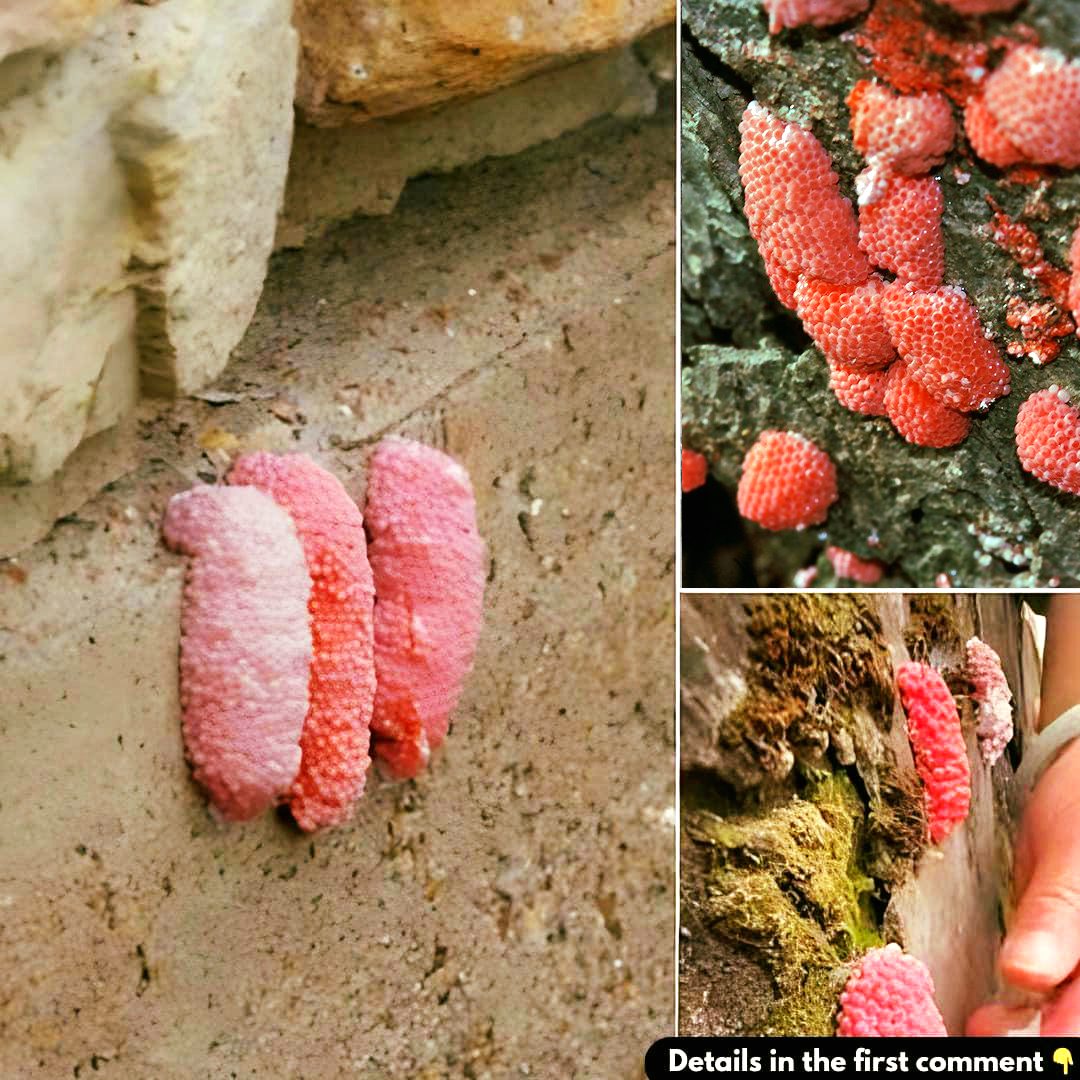If you’ve recently noticed clusters of bright pink eggs in your garden or near water bodies, it’s essential to recognize them as the reproductive markers of the invasive apple snail. Originating from South America, these snails have become a significant concern worldwide due to their rapid spread and detrimental impact on ecosystems.

Understanding Apple Snails
Apple snails, belonging to the family Ampullariidae, are freshwater gastropods known for their large size and distinctive appearance. Some species can grow up to 15 centimeters (6 inches) in diameter, making them one of the largest freshwater snails globally. They exhibit a variety of shell colors, including brown, albino, yellow, blue, purple, pink, and jade, often with unique banding patterns. Their adaptability and aesthetic appeal have made them popular in the aquarium trade.

From Aquariums to Invasive Pests
While species like Pomacea bridgesii and Pomacea diffusa are favored in aquariums for their plant-friendly behavior, other species have become notorious pests. The introduction of apple snails to non-native regions often results from irresponsible aquarium dumping. For instance, in the United States, their presence was first reported in Texas during the 1970s and later in Louisiana in 2006. Bill Walton, a specialist at the Alabama Cooperative Extension System, notes, “The main idea is that they often get a little too large or maybe too abundant, and for whatever reason the aquarium owner decides they don’t want them anymore. So they decide to just release them in the waterways.”
Ecological Impact
Apple snails are recognized as one of the world’s worst invasive species. Their voracious appetite for aquatic vegetation allows them to outcompete native species and disrupt local ecosystems. They thrive in wet environments such as ponds, lakes, and swamps, particularly in warmer climates. Their ability to survive on land by sealing their shells with an operculum enables them to endure dry periods, further aiding their spread.
Reproductive Capabilities
A key factor in their invasive success is their prolific reproduction. Female apple snails lay clusters of bright pink eggs above the waterline on vegetation, rocks, or man-made structures. Each cluster can contain hundreds to thousands of eggs, leading to rapid population growth. The eggs’ vibrant color serves as a warning to potential predators, as they contain toxins that can cause skin and eye irritation upon contact.
Health Risks
Beyond environmental concerns, apple snails pose health risks to humans. They are known carriers of the rat lungworm parasite (Angiostrongylus cantonensis), which can cause severe neurological infections if ingested. This risk underscores the importance of handling these snails and their eggs with caution and preventing their spread.
Preventive Measures
To mitigate the impact of apple snails:
- Avoid Release: Never release aquarium pets into the wild. Unwanted snails should be rehomed or humanely euthanized.
- Egg Removal: If you find pink egg clusters, scrape them into the water using gloves or tools to prevent hatching. The eggs will drown and die when submerged. UF/IFAS Blogs
- Public Awareness: Educate others about the risks associated with apple snails and the importance of responsible pet ownership.
Conclusion
The presence of bright pink egg clusters is a clear indicator of apple snails in the vicinity. Recognizing and addressing this issue is crucial to protecting local ecosystems and public health. By taking proactive measures, we can help curb the spread of this invasive species and preserve the natural balance of our environments.

